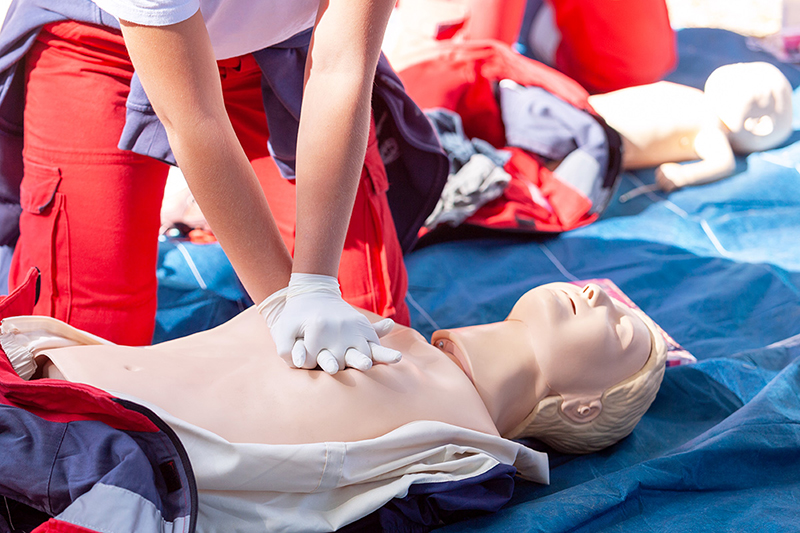Anyone can help save a life by performing hands-only CPR, and it only includes two steps. The American Heart Association recommends first calling 9-1-1 as soon as you see someone collapse. Next, use your hands to push in the center of the person’s chest at 100 to 120 beats per minute – the same rate as songs like ‘Stayin’ Alive’ by the Bee Gees.
Despite the simplicity of hands-only CPR, many people don’t feel comfortable acting in the face of a medical emergency. Resuscitation experts from Yale New Haven Hospital offered these tips to help people feel more confident with CPR.
1. You don’t need to be certified to perform hands-only CPR
Getting hands-only CPR training is helpful and anyone interested can get certified through local programs associated with the American Heart Association. However, a lack of training should not stop someone from performing hands-only CPR if they witness someone in distress.
“Anything is better than nothing,” said Yale New Haven Hospital Resuscitation Management Specialist Nancy Clark-Cassella, BSN, CCRN-K. “To really make a difference in out of hospital cardiac arrest survival, it will be the bystander, and probably the untrained one, who steps in and does something.”
2. Hands-only CPR may be more tiring than you expected
Administering continuous chest compressions for an extended period can be physically exhausting. Even some medical professionals undergoing training are surprised at how demanding CPR can be.
“You’re going to sweat. You’re going to be out of breath,” said Resuscitation Management Specialist Kevin Sigovitch, MSN, RN.
Don’t let that deter you.
Keep doing chest compressions until help arrives.
3. Don’t underestimate the importance of calling 9-1-1
Even if someone feels ready to administer chest compressions right away, calling 9-1-1 is a crucial step to CPR. It will prompt a response from medical professionals who will have additional training and equipment. If you don’t know what to do, stay on the line. The operator will walk you through the process – step by step.
4. Get familiar with your surroundings
Thankfully, it’s become more common for automated external defibrillators or AEDs to be found in public areas like schools, libraries and stores. An AED can check someone’s heart rhythm and deliver electric shocks when needed. You never know when having one will come in handy.
“We have stories of staff members that were at the gym and were aware of an AED there,” Sigovitch said. “It was a PCA who helped save someone's life just from doing CPR, and she directed the staff there to retrieve the AED from behind their counter.”
5. Stick to the beat
How do you know you are doing compressions correctly? Don’t worry too much about pushing deeply enough, instead focus on performing compressions at the correct rate of 100-120 beats per minute, which naturally gets most people to the correct depth. If you need help getting there, think of a song with that beat. If disco isn’t your thing, hum ‘Hips Don’t Lie’ by Shakira or ‘Bad Romance’ by Lady Gaga.
Learn more about CPR from the American Heart Association.




